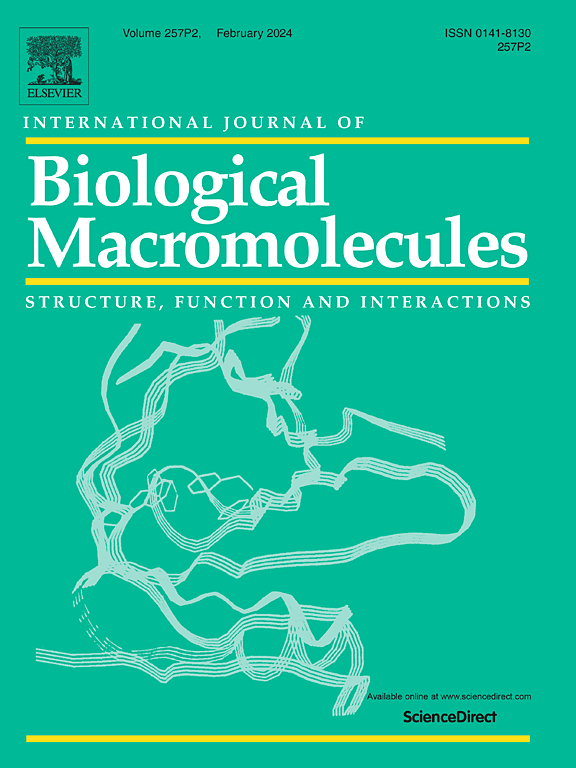植物蛋白:动物性食品的多营养可持续替代品及其结构、功能和相互关系综述
IF 8.5
1区 化学
Q1 BIOCHEMISTRY & MOLECULAR BIOLOGY
International Journal of Biological Macromolecules
Pub Date : 2025-08-04
DOI:10.1016/j.ijbiomac.2025.146465
引用次数: 0
摘要
植物性蛋白质越来越被认为是动物源性蛋白质的多营养和可持续替代品。它们来源于豆类、谷物、种子和坚果,提供必需的氨基酸,如亮氨酸、赖氨酸、蛋氨酸和色氨酸。大豆蛋白的蛋白质含量为36 - 40%,氨基酸结构完整,而豌豆蛋白的消化率为80%,精氨酸水平较高(约8.7 g/100 g)。用植物蛋白替代动物蛋白可以降低5 - 10%的低密度脂蛋白胆固醇,降低18%的2型糖尿病风险。在环境方面,与红肉蛋白相比,它们的温室气体排放量减少了90%,用水量减少了75%。植物蛋白的结构变化影响其在食品配方中的溶解性、乳化性和凝胶性关键因素。乳化活性的提高,如热改性罗宾蛋白增加25%,增强了质地和稳定性。此外,植物蛋白在药品、化妆品和可生物降解包装中也有应用。本文综述了植物蛋白的组成、功能和结构特性、工业应用以及提高消化率和生物利用度的酶解和发酵等新型加工技术,将植物蛋白定位为人类健康和可持续发展的重要因素。本文章由计算机程序翻译,如有差异,请以英文原文为准。
Plant-based protein: A multi-nutritional sustainable alternative to animal foods and their structure, functions, and relationship: A review
Plant-based proteins are increasingly recognized as multi-nutritional and sustainable alternatives to animal-derived proteins. Derived from legumes, grains, seeds, and nuts, they provide essential amino acids such as leucine, lysine, methionine, and tryptophan. Soy protein offers 36–40 % protein content with a complete amino acid profile, while pea protein exhibits ~80 % digestibility and high arginine levels (~8.7 g/100 g). Substituting animal proteins with plant-based options may reduce LDL cholesterol by 5–10 % and lower type 2 diabetes risk by 18 %. Environmentally, they contribute up to 90 % fewer greenhouse gas emissions and use 75 % less water than red meat proteins. Structural variations in plant proteins influence their solubility, emulsification, and gelation—critical factors in food formulation. Improved emulsifying activity, such as a 25 % increase with heat-modified lupin proteins, enhances texture and stability. Additionally, plant proteins find applications in pharmaceuticals, cosmetics, and biodegradable packaging. This review highlights their composition, functional and structural properties, industrial applications, and novel processing technologies like enzymatic hydrolysis and fermentation to enhance digestibility and bioavailability, positioning plant proteins as vital agents of human health and sustainability.
求助全文
通过发布文献求助,成功后即可免费获取论文全文。
去求助
来源期刊
CiteScore
13.70
自引率
9.80%
发文量
2728
审稿时长
64 days
期刊介绍:
The International Journal of Biological Macromolecules is a well-established international journal dedicated to research on the chemical and biological aspects of natural macromolecules. Focusing on proteins, macromolecular carbohydrates, glycoproteins, proteoglycans, lignins, biological poly-acids, and nucleic acids, the journal presents the latest findings in molecular structure, properties, biological activities, interactions, modifications, and functional properties. Papers must offer new and novel insights, encompassing related model systems, structural conformational studies, theoretical developments, and analytical techniques. Each paper is required to primarily focus on at least one named biological macromolecule, reflected in the title, abstract, and text.

 求助内容:
求助内容: 应助结果提醒方式:
应助结果提醒方式:


